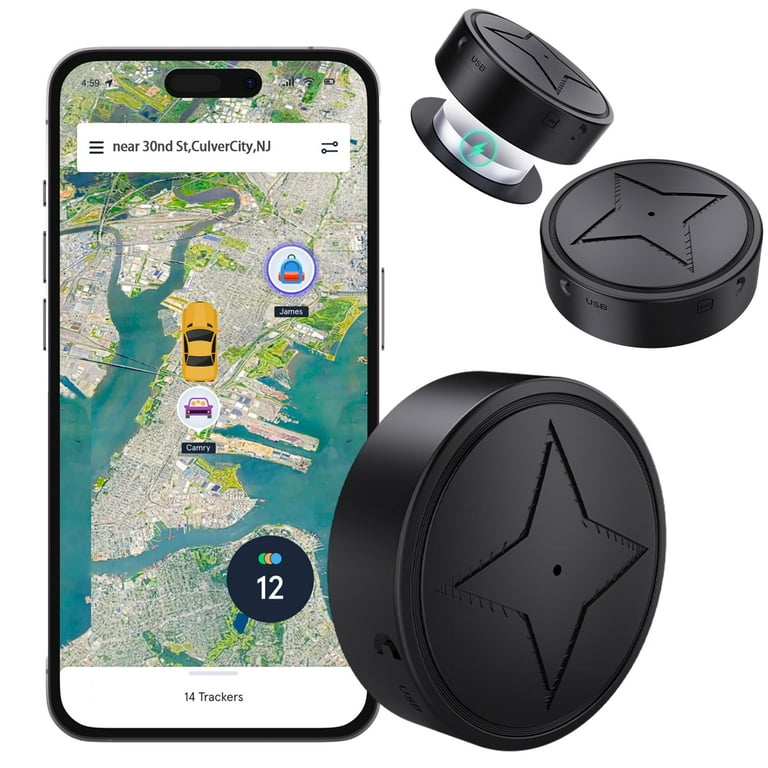Ingenious Uses GPS Tracking in Everyday Life
Ingenious Uses GPS Tracking in Everyday Life
Blog Article
Making The Most Of Efficiency With GPS Monitoring: Methods for Fleet Monitoring and Property Monitoring
In the world of fleet administration and possession surveillance, the use of GPS radar has become a cornerstone for boosting operational effectiveness and productivity. By harnessing the power of real-time data, businesses can enhance their logistics, optimize paths, and boost general fleet performance. The real possible lies not just in the implementation of these modern technologies but also in the tactical usage of the insights they provide. From improving driver safety to making educated choices based upon extensive data analytics, the opportunities are substantial. As we check out the different methods and methods to make the most of effectiveness with GPS tracking, a globe of opportunities opens to redefine just how organizations manage their fleets and monitor their properties.
Carrying Out Real-Time Tracking Solutions
To make best use of operational effectiveness, firms can carry out real-time tracking systems that supply instant location data for their assets. By using GPS modern technology, services can gain real-time understandings right into the whereabouts of their lorries, devices, and other valuable resources. This degree of visibility permits business to streamline procedures, boost productivity, and enhance general performance.
Real-time radar offer many benefits for firms throughout different sectors. With the ability to keep track of possessions constantly, organizations can enhance directing, routine maintenance much more properly, and lower the threat of burglary or loss. These systems enable organizations to react immediately to any unanticipated occasions or disturbances, guaranteeing marginal downtime and maximum effectiveness.
Implementing real-time monitoring systems requires careful planning and factor to consider of details company needs. Business must select the appropriate modern technology supplier, tailor the system to satisfy their needs, and provide sufficient training to workers. By buying real-time tracking options, organizations can remain ahead of the competitors, supply remarkable customer care, and attain sustainable growth in today's fast-paced market atmosphere.
Maximizing Path Planning and Organizing

One secret strategy for enhancing route planning is to use historic data and real-time info to recognize one of the most efficient courses for cars. By evaluating previous courses and considering aspects such as website traffic patterns and distribution home windows, companies can produce timetables that decrease unneeded quits and hold-ups. Additionally, applying vibrant directing capacities enables adjustments to be made in real-time based on altering problems, ensuring that chauffeurs constantly take the most effective path to their destination.
Enhancing Motorist Performance and Safety And Security
Enhancing driver efficiency and security is critical in guaranteeing the smooth and protected operation of a fleet. By making use of general practitioner tracking technology, fleet supervisors can check vehicle driver habits in real-time and offer prompt responses to promote safe driving methods. This includes tracking speed restrictions, rough stopping, acceleration patterns, and adherence to traffic policies.
Additionally, GPS radar can help in recognizing motorists check my site who might need extra training or support to boost their performance (gps tracking). By analyzing information on driving routines and patterns, fleet managers can execute targeted training programs to address details areas of improvement. This positive method not only boosts overall motorist efficiency but likewise adds to a much safer workplace for every person included
Along with efficiency surveillance, GPS tracking systems can additionally enhance driver security by supplying emergency situation assistance functions. In case of a crash or breakdown, chauffeurs can rapidly send out distress signals, permitting fleet supervisors to respond quickly and dispatch aid when required. Overall, integrating GPS tracking modern technology right into fleet monitoring methods is critical for enhancing motorist performance and guaranteeing the security of both assets and drivers.

Utilizing Geofencing for Improved Security
Making the most of fleet security goes beyond checking driver performance and security; one efficient approach is through the calculated usage of geofencing modern technology. Geofencing allows fleet managers to develop online limits or geozones around particular areas, enabling them to receive real-time informs when vehicles enter or exit these marked locations. By establishing up geofences around risky areas such as construction sites, unauthorized areas, or perhaps consumer locations, fleet supervisors can improve safety measures and alleviate possible risks.
Geofencing not only improves safety and security however likewise allows quick feedback times in case of unapproved vehicle usage or burglary. In case of a violation, signals can be sent out to fleet supervisors, enabling them to take immediate activity to recoup the lorry and find. Furthermore, geofencing can assist in keeping track of lorry activity during off-hours, guaranteeing that vehicles are not being utilized for unauthorized functions.
Integrating GPS Information for Strategic Decision-Making
Using GPS data assimilation is essential for informed strategic decision-making in fleet monitoring procedures. By integrating GPS information into fleet management systems, services can acquire beneficial insights into their procedures, original site causing a lot more efficient paths, improved vehicle driver habits, and better general performance. With the assimilation of GPS data, fleet managers can track vehicle places in real-time, display fuel intake, and analyze chauffeur efficiency metrics such as rate, idling time, and extreme braking.
Moreover, incorporating GPS data enables for the optimization of paths based upon website traffic conditions, climate patterns, and various other external elements, helping to reduce delivery times and operational costs. By evaluating historical GPS information, fleet managers can identify fads, patterns, and areas for improvement, allowing them to make data-driven decisions that enhance efficiency and improve procedures.
Final Thought
In verdict, the implementation of general practitioner radar can greatly enhance performance in fleet administration and possession surveillance. By making use of real-time monitoring, enhancing route preparation, boosting chauffeur efficiency, using geofencing for safety and security, and incorporating GPS data for strategic decision-making, companies can attain and enhance procedures expense financial savings (gps tracking). These approaches make it possible for companies to streamline procedures, increase productivity, and inevitably make the most of the overall performance of their procedures
In the realm of fleet administration and property monitoring, the usage of General practitioner monitoring systems has ended up being a keystone for boosting operational effectiveness and performance. As we explore the various methods and strategies to make the most of effectiveness with General practitioner monitoring, a globe of opportunities opens up to redefine how organizations manage their fleets and monitor their properties.
By making use of General practitioner monitoring technology, fleet managers can keep an eye check out this site on motorist behavior in real-time and provide prompt responses to advertise secure driving techniques. With the assimilation of GPS data, fleet supervisors can track vehicle areas in real-time, display fuel consumption, and examine driver efficiency metrics such as rate, idling time, and extreme braking.
In conclusion, the execution of General practitioner tracking systems can significantly enhance performance in fleet administration and asset monitoring.
Report this page